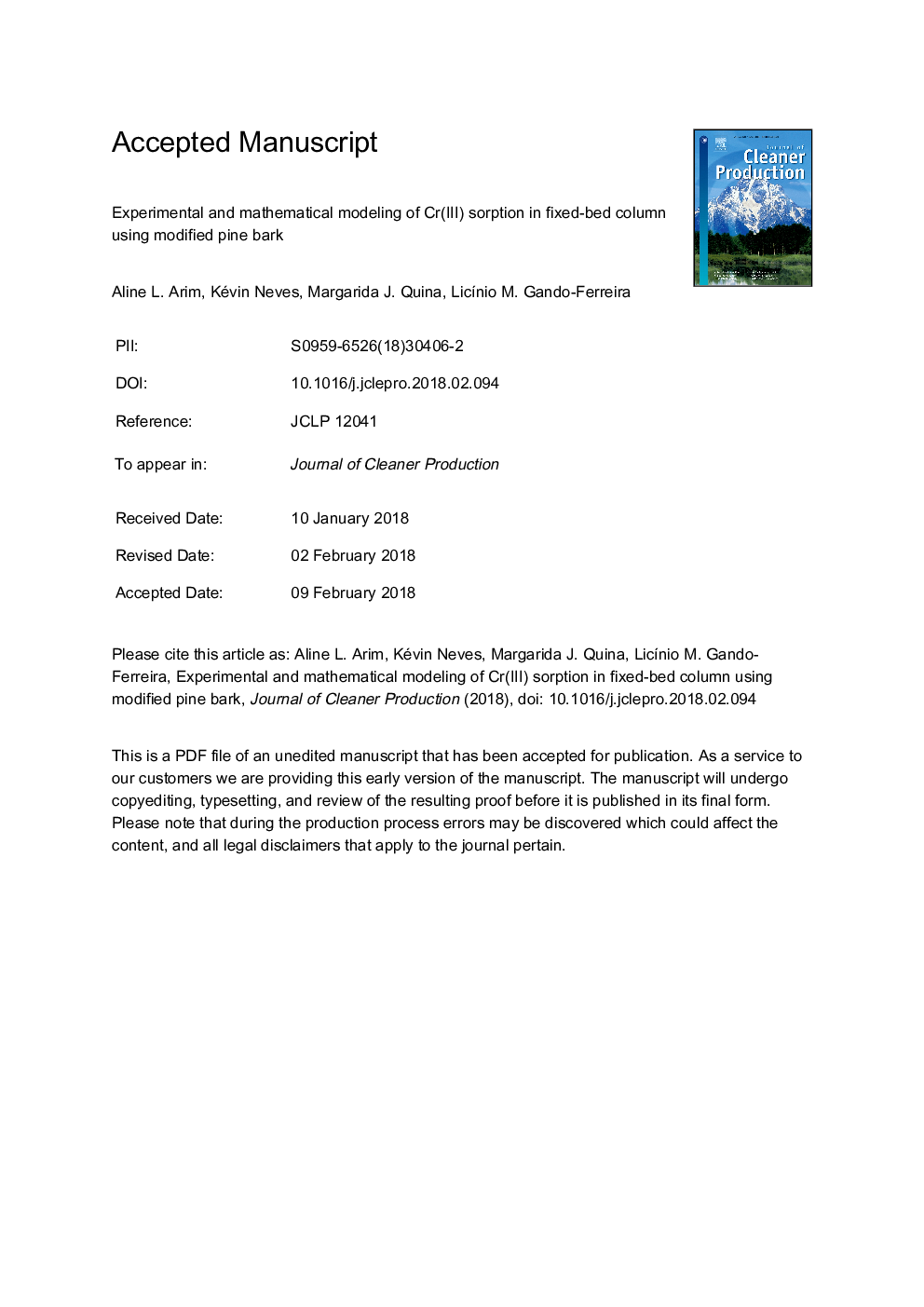| Article ID | Journal | Published Year | Pages | File Type |
|---|---|---|---|---|
| 8097003 | Journal of Cleaner Production | 2018 | 30 Pages |
Abstract
This work aims to analyse the dynamic behavior of a fixed-bed column to remove Cr(III) from a synthetic effluent. The adsorbent was prepared by mercerizing pine bark (MPB). The dynamic study of the sorption process was based on the breakthrough curves obtained experimentally and modelled by a mechanistic approach, empirical models and multivariate regression analysis. The experimental results showed that the maximum fraction of saturated bed (FSB) was 0.65 when the inlet concentration was 100â¯mg/L, the height of the bed (H) 6.5â¯cm and the superficial velocity (u0) 14.4â¯Ãâ¯10â2â¯cm/s. The mechanistic model includes equilibrium parameters and the linear driving force (LDF) approach to express the intraparticular mass transport. The prediction of the experimental profiles was very acceptable, and the parameters used are valuable for the further design of fixed-bed column. The fitting through empirical models (Bohard-Adams, Thomas and Yoon-Nelson) are similar or even better than the mechanistic model. Aiming at the optimization of the column operation, a multivariate linear regression model (MRM) was developed based on a full factorial design. Thus, relationships between the variable responses FSB and Îtads (defined as the difference between the breakthrough time and exhaustion time) and two input variables (H and u0) were developed. This model was validated and used to predict the optimal operating conditions to maximize FSB (0.65) and minimize Îtads (133â¯min). Finally, the regeneration of the adsorbent was assessed using nitric acid. The MPB adsorbent tested demonstrated a good capacity for uptaking Cr(III) from liquid effluents in column configurations.
Related Topics
Physical Sciences and Engineering
Energy
Renewable Energy, Sustainability and the Environment
Authors
Aline L. Arim, Kévin Neves, Margarida J. Quina, LicÃnio M. Gando-Ferreira,
